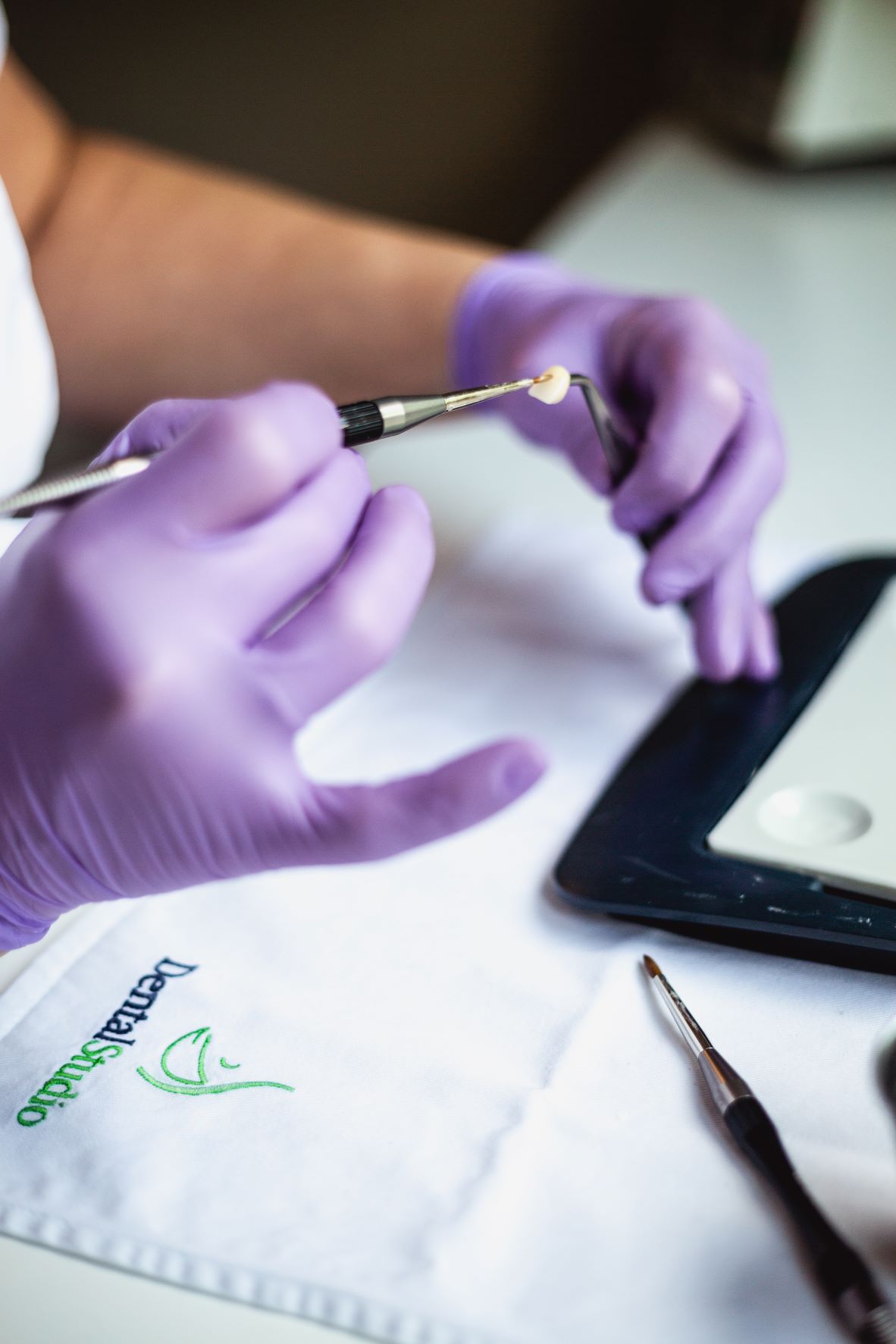Aesthetic dentistry
Aesthetic dentistry is a multidisciplinary branch of dentistry aimed at long-term visually natural balance between soft and hard oral tissues, while complying with the healthcare principles and valid scientific and technological standards. Resolving aesthetically most demanding situations with patients represents a challenge our expert team encounters on a daily basis and it includes the implementation of knowledge, responsibility and methods, in consultations with a wider team of dentists.
Aesthetic dentistry includes procedures for achieving dental health, as well as procedures with an aesthetic effect. Restorative dentistry is focused on dental repairs, whereas aesthetic effects are achieved by composite facets, teeth whitening, dental decorations and facial aesthetics, resulting in improved looks and satisfaction of a patient.
Restorative dentistry
Restorative dentistry is applied in case of the most common problem in our region – cavity.
Cavities are permanently damaged areas in the hard surface of your teeth that develop into tiny openings or holes. Cavities, also called tooth decay or caries, are caused by a combination of factors. Cavity occurs as aresult of a bacterial infection of plaque, i.e. soft dental deposit. In contact with lactic acid, as a product of sugar conversion, in the conditions where there are no defense factors, teeth demineralisation, i.e. dissolvement of calcium and phosphate in dentin, occurs
Which are modern cavity treatments?
In our policlinic, we apply modern cavity treatment standards, which means that prevention and therapy are equally represented. We perform prevention activities before a cavity forms, and therapy after it occurs. Every patient is examined in detail, a clinical check-up is executed, and a teeth status is analysed using OPT (orthopantomographic) X-rays. After that, a therapy is defined individually by applying the medical model of cavity treatment. Cavity treatment includes 4 steps:
- Control of bacteria by treating cavity lesions and applying medicines
- Reduction of a cavity lesion reoccurrence risk
- Tooth remineralisation
- Long-term monitoring of a patient, including regular controls every 3 or 6 months, depending on risk factors.
We are particularly focused on minimally traumatic intervention in cavity lesion removal, preservation of pulp, i.e. the nervous vascular system in a tooth root, ‘nerve’, and total aesthetic restoration of part of dental tissue. We use high-quality filling materials, whose features fully meet aesthetic and function criteria of the restored part of a tooth.
Facets ili veneers
Facets or veneers represent minimally invasive composite or porcelain restorations, which largely improve aesthetic parameters. They are an ideal solution for diastema (space between teeth), change of colour, position and shape of specific teeth. Reshaping while preparing teeth for facets is reduced to a minimum or is not required at all.
For facets or veneers, a conservative procedure with composite materials or CAD CAM technology is applied.
Composite facets or veneers are modelled directly on a patient’s teeth, after a minimal tooth surface preparation. A patient does not feel the restoration, makes no efforts during a procedure and gets an acceptable price. Downsides of composite facets include limited length of an incisal edge and durability, similarly to fillings.
For CAD CAM facets or veneers, we also have a minimal intervention on a tooth surface, with the facete produced in a machine, based on an impression. Owing to material transparency, these facets result in a natural look of teeth and are also significantly more durable, similarly to non-metal crowns.
Facets or veneers are recommended in the following situations:
– Tetracycline discoloured teeth
– Devitalised teeth that changed colour
– Teeth that changed colour due to various factors and cannot be whitened
– Old and used-up fillings that changed colour
– Diastema (space between teeth) and black triangles
– For crown lengthening
– Irregular teeth position
– Crown rupture
– Lack of enamel
– Abrasion or erosion






